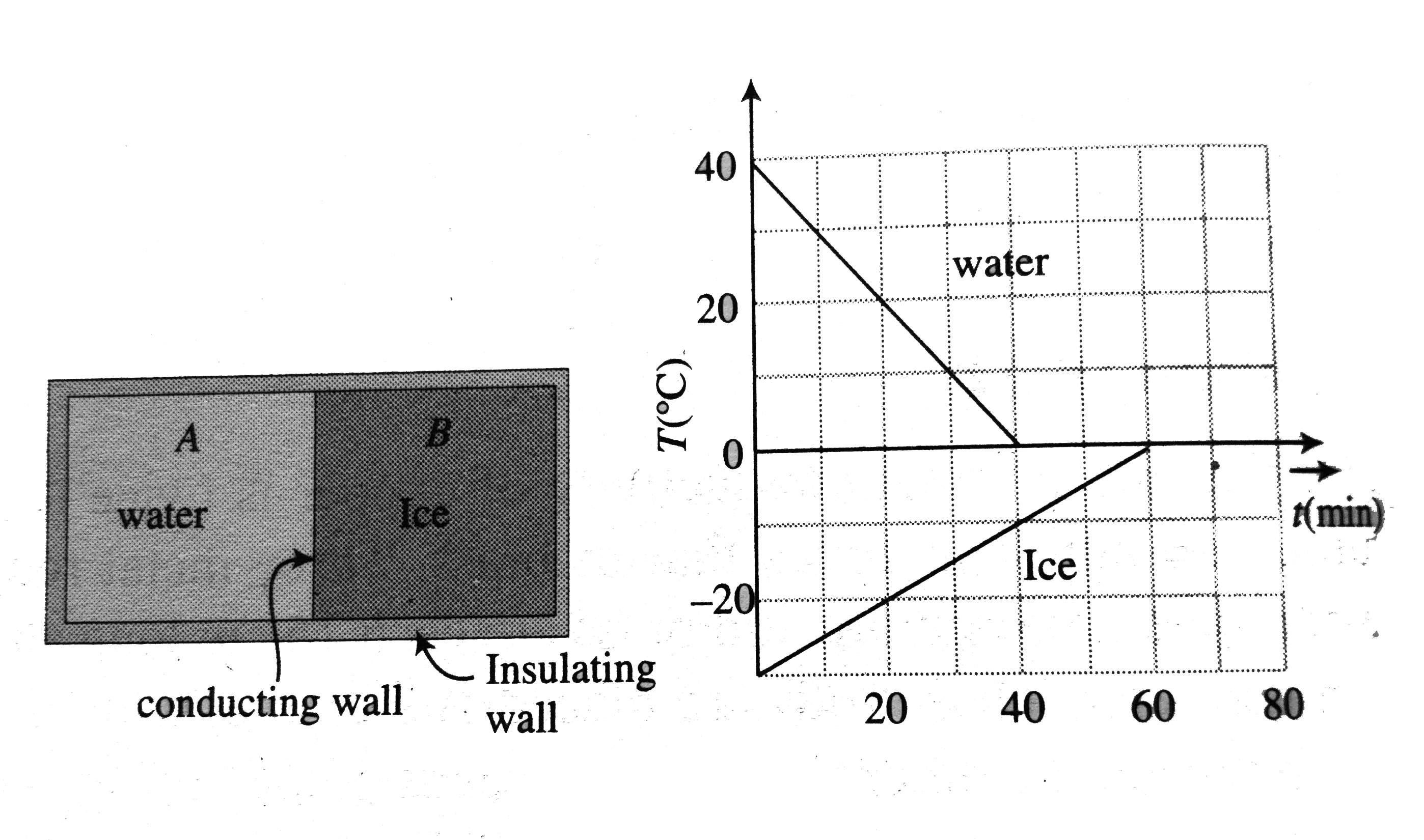An 8.00 g ice cube at its melting point is added to 130cm3 of tea (water ) initially at 90.0∘C in a well-insulated container. When equilibriu is reached, what has been the decrease in the tea's temperature ?
The correct Answer is:9.82∘C
Topper's Solved these Questions
- BOOK - RESNICK AND HALLIDAYCHAPTER - HEAT-MEASUREMENT AND TRANSFEREXERCISE - PRACTICE QUESTIONS60videos
HEAT-MEASUREMENT AND TRANSFER
- BOOK - RESNICK AND HALLIDAYCHAPTER - HEAT-MEASUREMENT AND TRANSFEREXERCISE - PRACTICE QUESTIONS(MORE THAN ONE CORRECT CHOICE TYPE )8videos
HEAT-MEASUREMENT AND TRANSFER
- BOOK - RESNICK AND HALLIDAYCHAPTER - HEAT-MEASUREMENT AND TRANSFEREXERCISE - CHECKPOINT 21videos
HEAT-MEASUREMENT AND TRANSFER
- BOOK - RESNICK AND HALLIDAYCHAPTER - GRAVITATIONEXERCISE - PRACTICE QUESTIONS (INTEGER TYPE)4videos
GRAVITATION
- BOOK - RESNICK AND HALLIDAYCHAPTER - HYDROGEN ATOMEXERCISE - PRACTICE QUESTIONS(Integer Type)6videos
HYDROGEN ATOM
Similar Questions
A person makes a quantity of iced tea by mixing 250g of hot tea (essentially wwater ) with an equal mass of ice at its melting point.Assume the mixture has negligible energy exchange with its environment. If the tea's initial temperature is Ti=90∘C, when thermal equilibrium is reached what are (a) the mixture's temperature Tf and (b) the remaining mass mf of ice ? If Ti=70∘C, when thermal equilibrium is reached what are (c ) Tf and (d) mf ?
View Solution(a) Two 40g ice cubes are droped into 200g of water in a thermally insulated container. If the water is initially at 25∘C, and the ice comes directly from a freezer at −15∘C, what is the final temperature at thermal equilibrium? (b) What is the final temperature if only one ice cube is used ?
View Solution
Knowledge Check
- Question 1 - Select One
The water equivalent of a calorimeter is 10 g and it contains 50 g of water at 15∘C. Some amount of ice, initially at −10∘C is dropped in it and half of the ice melts till equilibrium is reached. What was the initial amount of ice that was dropped (when specific heat of ice = 0.5calg−1∘C−1, specific heat of water =1.0calg−1∘C−1 and latent heat of melting of ice = 80 cal g'−1)?
A10 gB18 gC20 gD30 g - Question 2 - Select One
In a container of negligible heat capacity, 200 g ice at 0∘C and 100 g steam at 0∘C are added to 200 g of water that has temperature 55∘C Assume no heat is lost to the surroundings and the pressure in the container is constant 1.0 atm.
What is the final temperature of the system?A48∘CB72∘CC94∘D100∘C - Question 3 - Select One

A 0.60 kg sample of water and a sample of ice are placed in two compartmetnts A and B separated by a conducting wall, in a thermally insulated container. The rate of heat transfer from the water to the ice through the conducting wall is constant P, until thermal equilibrium is reached. The temperature T of the liquid water and the ice are given in graph as functions of time t. Temperature of the compartments remain homogeneous during whole heat transfer process. Given specific heat of ice =2100J/kg−K, specific heat of water =4200J/kg−K, and latent heat of fusion of ice =3.3×105J/kg.
Initial mass of the ice in the container equal toA0.36 kgB1.2 kgC2.4 kgD3.6 kg
An insulated container has 60 g of ice at −10∘C. 10 g steam at 100∘C, sourced from a boiler, is mixed to the ice inside the container. When thermal equilibrium was attained, the entire content of the container was liquid water at 0∘C. Calculate the percentage of steam (in terms of mass) that was condensed before it was fed to the container of ice. Specific heat and latent heat values are
Sice=0.5calg−1.∘C−1, Swater=1.0calg−1.∘C−1
Lfusion=80calg−1, Lvaporization=540calg−1View Solution
A 0.60 kg sample of water and a sample of ice are placed in two compartmetnts A and B separated by a conducting wall, in a thermally insulated container. The rate of heat transfer from the water to the ice through the conducting wall is constant P, until thermal equilibrium is reached. The temperature T of the liquid water and the ice are given in graph as functions of time t. Temperature of the compartments remain homogeneous during whole heat transfer process. Given specific heat of ice =2100J/kg−K, specific heat of water =4200J/kg−K, and latent heat of fusion of ice =3.3×105J/kg.
Initial mass of the ice in the container equal toView Solution
A 0.60 kg sample of water and a sample of ice are placed in two compartmetnts A and B separated by a conducting wall, in a thermally insulated container. The rate of heat transfer from the water to the ice through the conducting wall is constant P, until thermal equilibrium is reached. The temperature T of the liquid water and the ice are given in graph as functions of time t. Temperature of the compartments remain homogeneous during whole heat transfer process. Given specific heat of ice =2100J/kg−K, specific heat of water =4200J/kg−K, and latent heat of fusion of ice =3.3×105J/kg.
Initial mass of the ice in the container equal toView SolutionIce at 0∘C is added to 200 g of water initially at 70∘C in a vacuum flask. When 50 g of ice has been added and has all melted the temperature of the flask and contents is 40∘C. When a further 80 g of ice has been added and has all melted the temperature of the whole becomes 10∘C. Find the latent heat of fusion of ice.
View SolutionIce at 0∘C is added to 200 g of water initially at 70∘C in a vacuum flask. When 50 g of ice has been added and has all melted the temperature of the flask and contents is 40∘C. When a further 80 g of ice has been added and has all melted the temperature of the whole becomes 10∘C. Find the latent heat of fusion of ice.
View Solution

